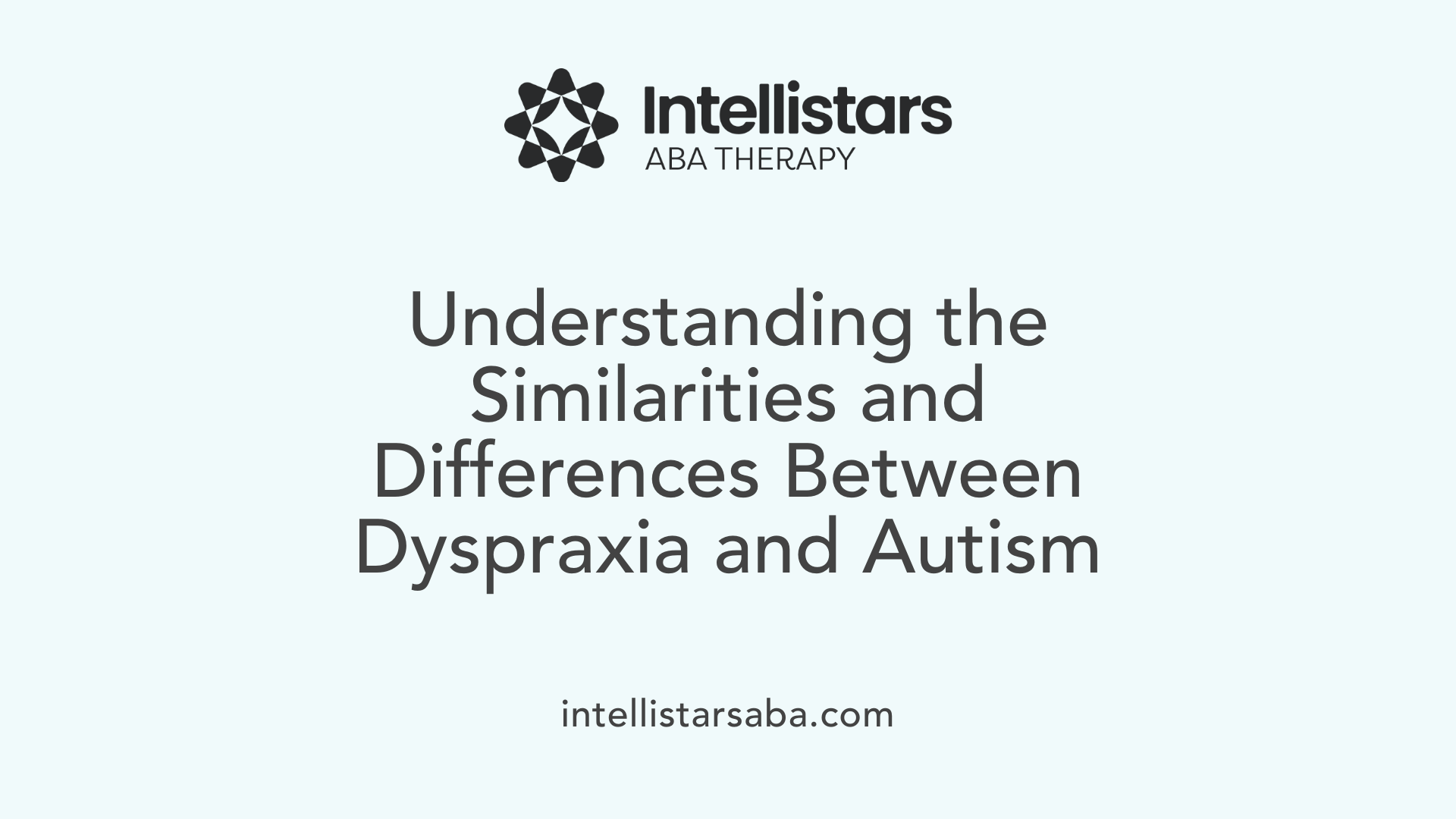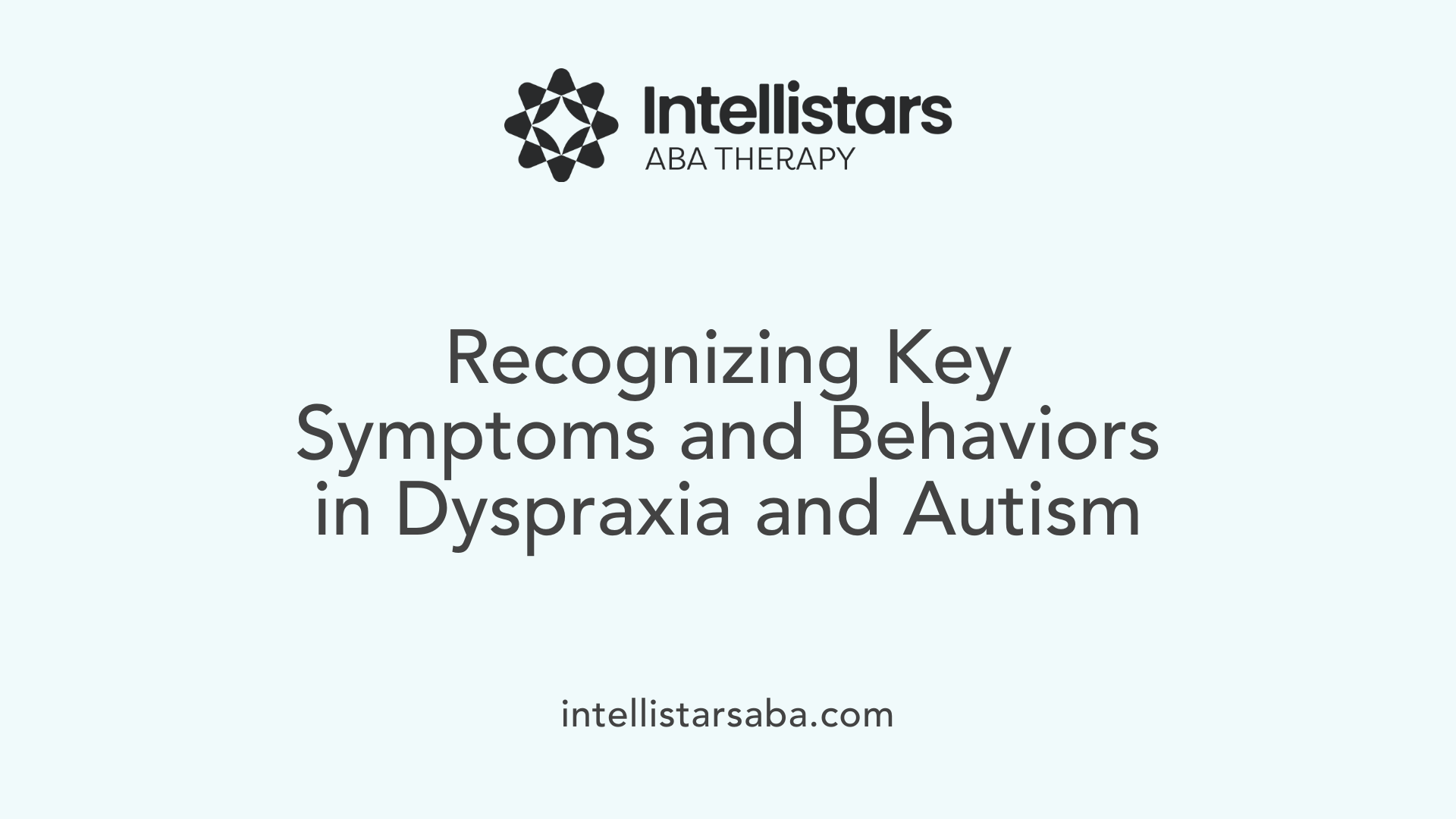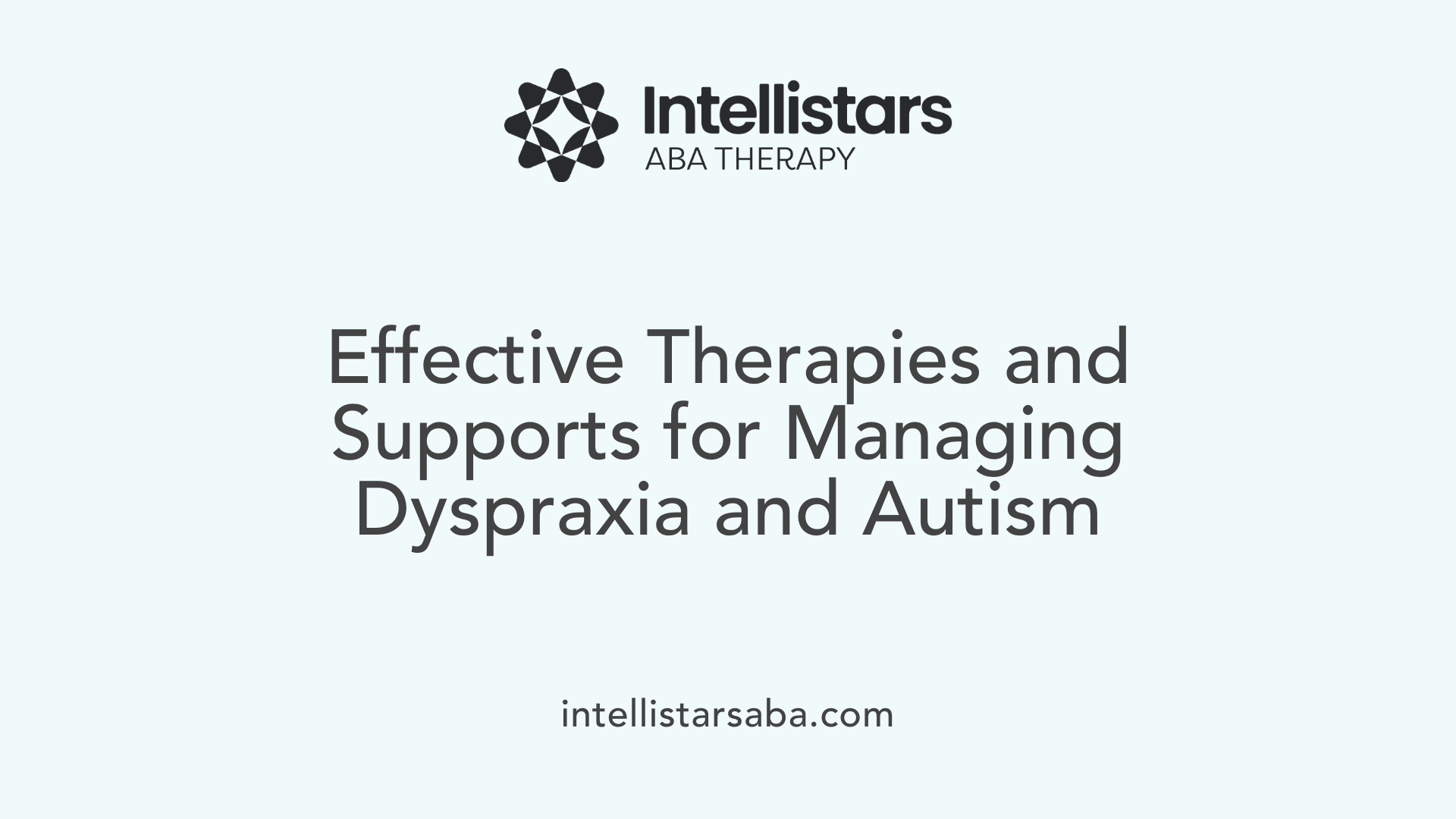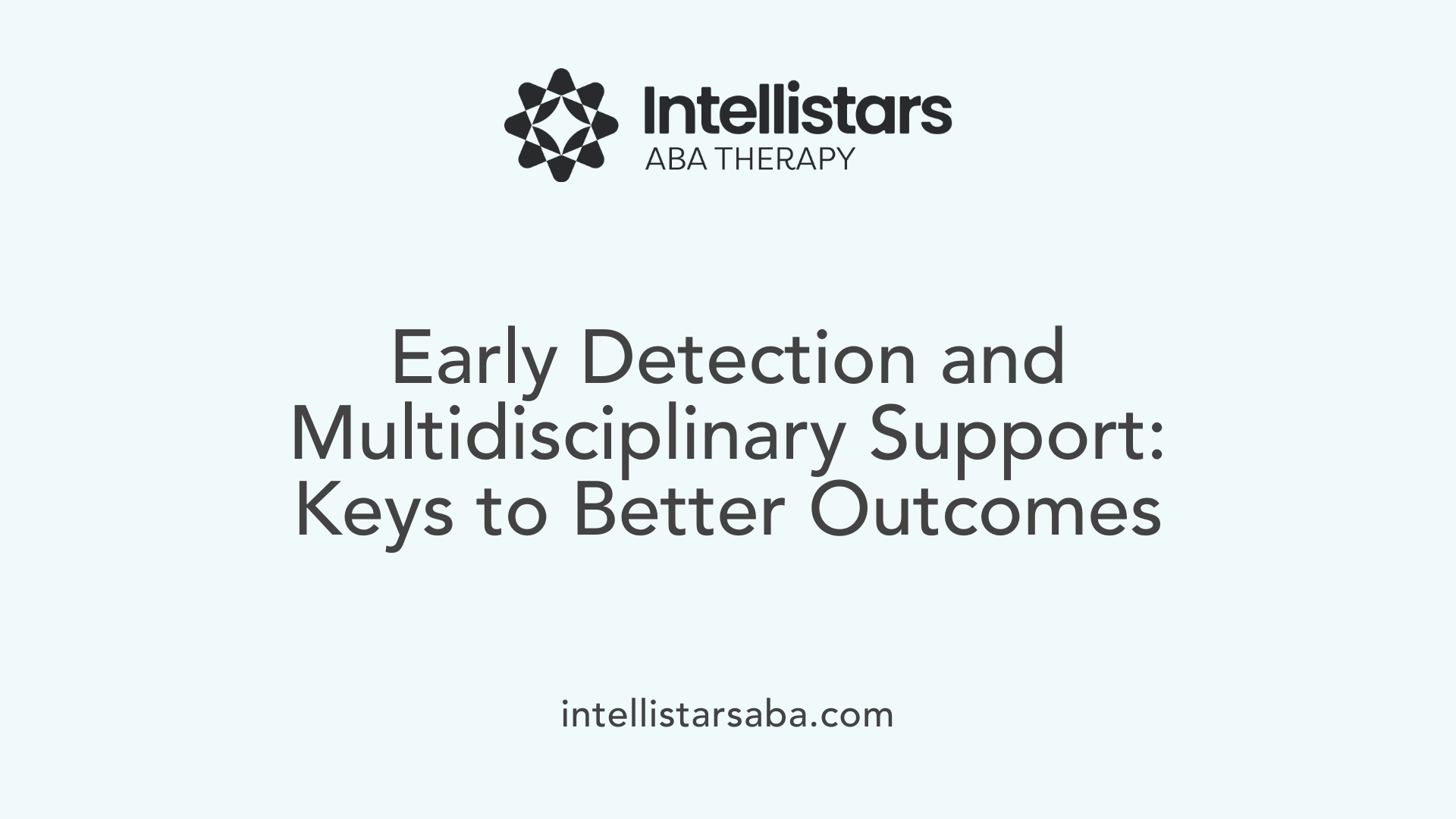Understanding the Intersection of Motor and Neurodevelopmental Conditions
Dyspraxia and autism are both neurodevelopmental conditions that, while distinct, often overlap in symptoms and co-occurrence. This article explores their relationship, neurological and behavioral underpinnings, diagnosis, and intervention strategies, highlighting why a comprehensive approach is essential for supporting affected individuals.
Dyspraxia: An Overview of Its Spectrum and Characteristics
What is dyspraxia?
Dyspraxia, also known as Developmental Coordination Disorder (DCD), is a neurological condition that impacts physical coordination, perception, and motor skills. It affects both fine motor skills, such as writing or tying shoelaces, and gross motor skills, including balance and coordination.
Is dyspraxia on a spectrum?
Yes, dyspraxia is considered to exist on a spectrum, meaning that its symptoms and severity can differ significantly among individuals. Some people may experience mild motor difficulties that only slightly affect daily routines, while others face more profound challenges that interfere with their coordination, speech, and organization.
Variety in severity and presentation
Difficulties associated with dyspraxia can manifest in various ways:
- Clumsiness and awkward movement
- Problems with balance and gait
- Difficulties with motor planning, such as using tools or performing sequences of movements
- Sensory sensitivities similar to those seen in autism
The presentation of dyspraxia varies by age and personal circumstance, affecting children and adults with different intensity levels. In children, it may show as delays in crawling, walking, speech, or hand-eye coordination. In adults, signs include trouble with tasks like writing, typing, or managing daily activities.
Impact on motor skills, perception, and cognition
Dyspraxia influences multiple areas:
- Motor Skills: Reduced ability to coordinate movements, affecting tasks like copying, handwriting, or sports.
- Perception: Difficulties sensing body position and spatial awareness, impacting navigation and organization.
- Cognitive Functions: Challenges with planning, memory, and processing information, which can overlap with other neurodevelopmental conditions like ADHD.
These overlapping aspects highlight the complex nature of dyspraxia, emphasizing the importance of personalized approaches to diagnosis and support.
| Aspect | Impact | Example |
|---|---|---|
| Motor coordination | Difficulty executing smooth, precise movements | Poor handwriting or clumsiness |
| Perception | Challenges sensing body position and space | Struggling with navigation |
| Cognitive functions | Problems with planning, organization, memory | Difficulty following multi-step instructions |
Understanding dyspraxia as a spectrum underscores its varied presentation and the necessity of tailored interventions. Recognizing its influence across motor, perceptual, and cognitive domains allows for more effective support strategies and improves quality of life for those affected.
The Overlap and Differentiation of Dyspraxia and Autism

Do individuals often have both dyspraxia and autism?
Yes, it is quite common for individuals to have both conditions. Research shows that about 80% of children diagnosed with autism spectrum disorder (ASD) also display signs of dyspraxia, also known as Developmental Coordination Disorder (DCD). This high rate of overlap suggests that many children and adults may struggle with both social and motor skills.
While autism primarily affects communication, social interaction, and sensory processing, dyspraxia mainly impacts motor coordination, balance, and planning movements. The co-occurrence can make daily tasks more challenging and may complicate early diagnosis because some symptoms, such as social awkwardness or sensory sensitivities, are shared.
Recognizing whether an individual has one or both conditions is vital for providing targeted support. Early diagnosis allows therapists and healthcare providers to implement specific interventions to improve motor skills, social abilities, and emotional well-being.
Are there shared symptoms or traits?
Both conditions can present with similar traits, adding to the complexity of diagnosis. For instance, individuals with autism and dyspraxia might avoid eye contact, be sensitive to sensory input, and have difficulties with language processing.
In addition, motor difficulties such as clumsiness, trouble with handwriting, and problems with spatial awareness are common in both conditions. Speech and imitation impairments, which influence social interactions, are also seen in autism and can be linked to dyspraxia, especially when apraxia of speech is involved.
Children with either condition might prefer routines, resist change, and show repetitive behaviors. These overlapping traits highlight why professionals need to carefully assess the range and roots of behaviors to differentiate the two.
How are dyspraxia and autism distinguished?
Despite their similarities, several features help differentiate dyspraxia from autism. Dyspraxia primarily involves motor planning and coordination issues, manifesting as difficulty using utensils, tying shoelaces, or maintaining balance. In contrast, autism involves core challenges in social communication, understanding social cues, and repetitive behaviors.
Neurodevelopmental assessments focus on motor skills, with dyspraxia identified through challenges in tasks requiring coordination. Autism diagnosis centers around social communication and sensory sensitivities. However, the significant overlap means that professionals often assess both motor and social domains.
Furthermore, some motor problems in autism are caused by sensory processing issues, whereas dyspraxia results from disrupted brain-body messaging. Recognizing these differences is essential for accurate diagnosis and effective intervention.
| Aspect | Dyspraxia | Autism | Shared Traits |
|---|---|---|---|
| Primary Difficulty | Motor coordination and planning | Social interaction and communication | Sensory sensitivities, routines, repetition |
| Common Signs | Clumsiness, speech delays, difficulty with tasks like tying shoes | Avoidance of eye contact, obsessive interests, repetitive movements | Sensory sensitivities, preference routines |
| Underlying Cause | Disrupted brain-body communication | Sensory processing issues, neural wiring | Avoiding eye contact, sensory sensitivities |
| Typical Age of Onset | Early childhood | Early childhood | Begin in infancy or early childhood |
| Co-occurrence Possibility | Yes, often with autism | Yes, often with dyspraxia | High overlap in symptoms and traits |
Understanding these distinctions and overlaps helps caregivers and healthcare professionals tailor appropriate supports. Recognizing that individuals can have both conditions ensures comprehensive intervention strategies, improving motor, social, and emotional outcomes.
Types of Dyspraxia and Their Manifestations

What are the main types of dyspraxia?
Dyspraxia, also known as Developmental Coordination Disorder (DCD), encompasses several types, each affecting different aspects of motor and speech functioning.
The primary categories include:
| Type | Description | Common Symptoms |
|---|---|---|
| Oral Dyspraxia | Affects the planning and coordination of mouth movements necessary for speech and eating. | Difficulties with chewing, swallowing, or producing speech sounds. |
| Verbal Dyspraxia | Impacts the ability to organize and produce speech, especially complex words and sentences. | Speech that is slow, halting, or inconsistent; problems with pronunciation. |
| Motor Dyspraxia | Influences overall physical coordination, balance, and fine motor skills. | Clumsiness, problems with handwriting, using scissors, or tying shoelaces. |
Each type can occur independently or together, leading to varied challenges in daily activities. Recognizing these distinctions helps in tailoring effective therapy and support strategies for individuals affected by dyspraxia.
Significant Symptoms and Behavioral Patterns in Dyspraxia and Autism

What are the common symptoms and signs of dyspraxia and autism?
Dyspraxia, also known as Developmental Coordination Disorder (DCD), manifests primarily through difficulties with movement and coordination. Children with dyspraxia often experience poor balance, clumsiness, and delays in reaching motor milestones such as walking, dressing, or using utensils. They may struggle with fine motor skills, including handwriting, buttoning shirts, or cutting with scissors. These motor difficulties can impact daily activities and academic performance.
Autism Spectrum Disorder (ASD) presents with a broad range of signs, most notably challenges in social interaction and communication. Children with autism may avoid eye contact, have difficulties understanding social cues, and display repetitive behaviors or intense, obsessive interests. Sensory sensitivities—such as overreaction or underreaction to sights, sounds, textures, and smells—are also common.
Although distinct, these conditions often share overlapping signs. Both may involve speech delays, difficulties with motor planning, and sensory processing issues. For example, a child might have trouble with tasks that require coordination, like tying shoelaces, and may also exhibit social awkwardness or difficulty engaging with peers.
Since dyspraxia and autism can co-occur, early and thorough assessment by healthcare professionals is vital. Proper diagnosis helps tailor intervention strategies, which might include occupational therapy, speech therapy, and behavioral support. Recognizing these signs early can significantly improve outcomes and help in managing daily challenges effectively.
Therapeutic Strategies and Support for Dyspraxia and Autism

Are there effective therapeutic approaches for managing dyspraxia and autism?
Yes, numerous therapeutic strategies have been found beneficial for individuals with dyspraxia, autism, or both. Occupational therapy plays a significant role in helping improve motor coordination, fine and gross motor skills, and daily activity management. It can assist with tasks like handwriting, dressing, and organizing routines.
Speech therapy is also essential, especially since many children with autism and dyspraxia face speech delays, articulation issues, or difficulties with social communication. Speech-language therapists work on language development, clarity, and expressive and receptive communication skills.
Physical therapy focuses on improving balance, posture, and motor planning, which are often affected in dyspraxia and autism. This helps children develop better coordination and perform motor tasks more smoothly.
Behavioral interventions such as applied behavior analysis (ABA) and social skills training are widely supported for reducing core autistic symptoms and enhancing social interaction. These methods emphasize positive reinforcement and structured learning.
Sensory integration therapy caters to sensory sensitivities common in both conditions, helping individuals process sensory information more effectively.
Specific interventions like imitation training, joint attention activities, and play-based therapies address the social and motor challenges directly associated with these neurodevelopmental differences.
Early intervention is crucial. Beginning therapy during infancy or early childhood with individualized, task-oriented strategies maximizes developmental gains. Approaches like the DIR (Developmental, Individual-differences, Relationship-based) model, also known as 'Floor Time,' focus on increasing social-emotional development and motor engagement.
Though no cure exists, combining these therapies customized to each person's strengths and challenges can markedly improve daily functioning, communication, and quality of life. The goal is to support independence and social participation throughout life stages.
The Importance of Early Diagnosis and Holistic Support

Why is early diagnosis crucial for dyspraxia and autism?
Early diagnosis of both autism and dyspraxia plays a vital role in ensuring better developmental outcomes. Recognizing these conditions early allows for timely interventions that can significantly improve an individual’s ability to manage daily activities.
When professionals identify signs of autism or dyspraxia early, they can tailor therapies to meet each person's unique needs. For example, occupational therapy can help improve motor coordination and daily functioning, while speech therapy addresses communication difficulties.
Detecting co-occurring conditions such as ADHD or dyslexia early is equally important, as these can add to the challenges faced by the individual. Coordinated support targeting all issues enhances the chances of better social, emotional, and cognitive development.
Moreover, early diagnosis helps reduce frustration and behavioral problems by teaching coping strategies at a young age. It also opens doors to educational resources and accommodations that support learning and social interaction.
The need for a multidisciplinary approach
Addressing autism and dyspraxia requires the expertise of a team of healthcare, educational, and therapeutic professionals. This collaboration ensures a comprehensive approach to diagnosis and intervention.
Pediatricians, neurologists, occupational therapists, speech-language pathologists, psychologists, and educators all contribute insights that help create individualized support plans. Engaging families early in this process ensures consistent reinforcement of strategies across home, school, and community settings.
By adopting a holistic approach, individuals with autism or dyspraxia can receive the right mix of therapies, support, and accommodations that foster their strengths and mitigate challenges. Ultimately, the goal is to enhance quality of life, social participation, and independent living.
| Aspect | Description | Professionals Involved |
|---|---|---|
| Early identification | Recognizing signs in early childhood | Pediatricians, caregivers |
| Tailored therapies | Custom interventions like occupational, speech, physical therapy | Therapists, neurologists |
| Co-occurring conditions | Addressing additional diagnoses such as ADHD or dyslexia | Psychologists, psychiatrists |
| Family involvement | Supporting family understanding and participation | Family counselors, educators |
| Long-term support | Continuous assessment and adjustment of intervention strategies | All professionals involved, ongoing education |
Understanding the importance of early and comprehensive support can markedly improve outcomes for individuals affected by autism and dyspraxia, promoting their development and well-being throughout life.
Embracing Neurodiversity and Supporting Individual Needs
Recognizing the intricate relationship between dyspraxia and autism underscores the importance of personalized diagnosis and intervention strategies. While these conditions share notable overlaps, each individual's experience varies widely, emphasizing the value of a tailored, multidisciplinary approach. Increased awareness, early diagnosis, and targeted therapies can dramatically improve quality of life, social functioning, and emotional well-being. Embracing neurodiversity and providing appropriate support resources fosters inclusion and empowers individuals to reach their full potential.
References
- Autism & Dyspraxia: Differences & Overlaps - Exceptional Individuals
- Dyspraxia, Motor Function and Visual-Motor Integration in Autism
- Dyspraxia in autism: association with motor, social, and ... - PubMed
- Imitation and dyspraxia in autism: Clinical and therapeutic implications
- Related conditions - a guide for all audiences
- Possible Links Between Dyspraxia and Autism
- Other conditions that affect autistic people - NHS
- ADHD and Dyspraxia: Similarities & Differences - The Autism Service






